Released on July 27th, 2020, Fluid Topics 3.8 puts the focus on improving the architecture of multi-data center deployments and expanding coverage with new connectors—including remote connectors that you can create on your own. Fluid Topics 3.8 also features advanced tools for managing security rules. Find out more!
Multi-datacenter architecture and performance improvement
Fluid Topics core technology has been significantly adapted in order to natively support the deployment of a clustered architecture across multiple datacenters that runs as one single solution.
Making this sophisticated architecture work required important R&D and product adaptation and inferred significant overall performance gains for all Fluid Topics users, whatever the deployment setup, including faster internal links reload.
This also materialized for our SaaS customers into the Global Presence offer, a multi datacenter infrastructure that is running with 3 DCs: USA, Europe, Asia – users are automatically connected to the closest available servers.
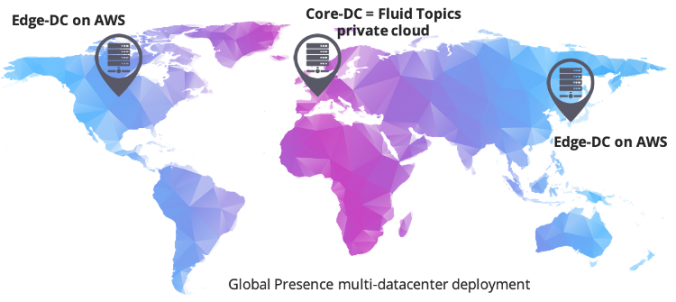
Global Presence is a premium feature of FT available upon specific subcription
See the video here: Fluid Topics global presence
Connectors and publishing
Create your own remote connectors and publish content from any data source to Fluid Topics. We have developed a dedicated Python library and the Web API that goes with it. This development kit makes it straightforward to develop bespoke Fluid Topics connectors:
- Simple installation;
- A few lines of script to create a remote connector, called RemoteClient;
- And a few lines of code to create the document and publish it.
While continuing to enhance our APIs, we delivered a Web service to get publication reports, available for all connectors.
Administration UI
New portal customization capabilities are available:
- Advanced security rules for content access: we have increased the flexibility of the Security Rules engine by introducing automatic value matching between a user profile and metadata values.
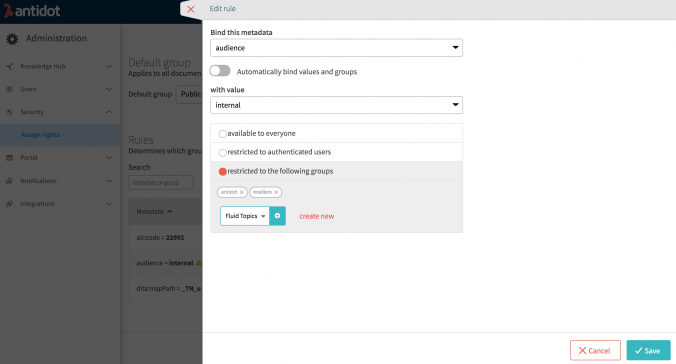
- Portal fonts: to grant administrors more autonomy in designing the UI of a Fluid Topics portal, we have added the possibility to define the fonts used for titles and text directly in the Portal Admin UI.
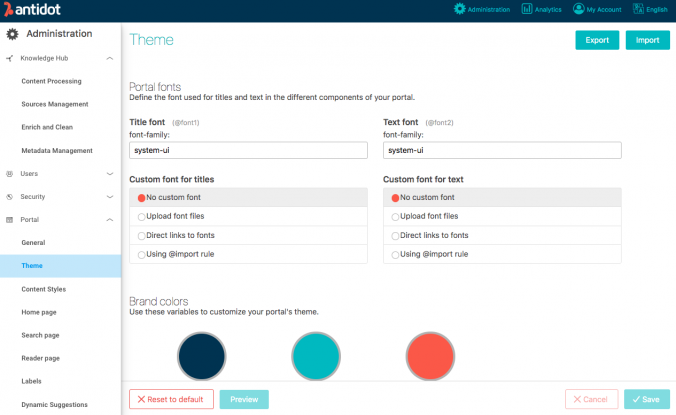
- Portal labels: we have also revamped the Labels Admin UI to configure all language parameters directly in the portal.
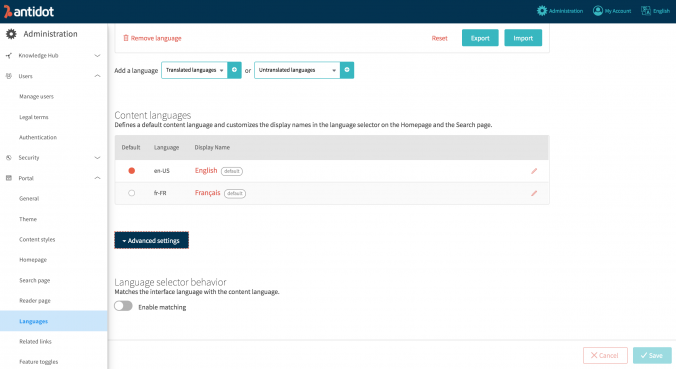
- Map attachments: a UI to facilitate the process of uploading and attaching documents to a book.
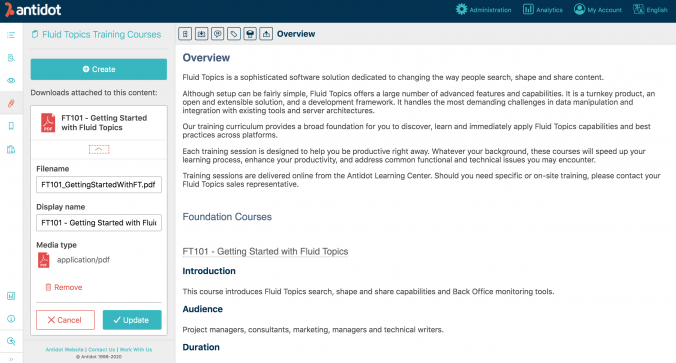
Analytics UI
We have implemented the Document Heatmap to help you understand how users read your books: which chapter, which section, which topic they prefer. The view counts are correlated with the structure of the Table of Contents.
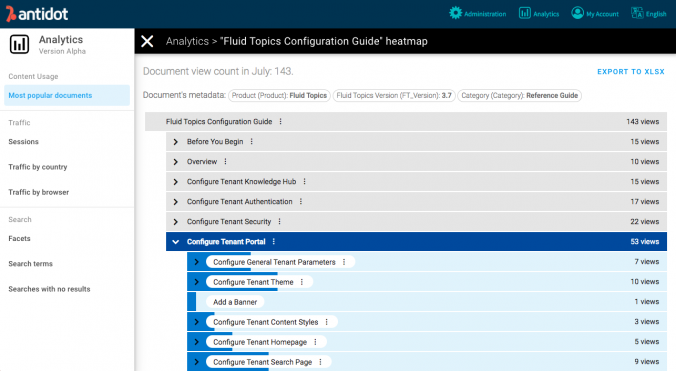
The Analytics menu ushers in a ‘Search’ section where you will find actionable information to understand how your users search. The first dashboards are:
- Search terms to identify most popular expressions.
- Searches with no results, a helpful tool to start populating your synonyms list.
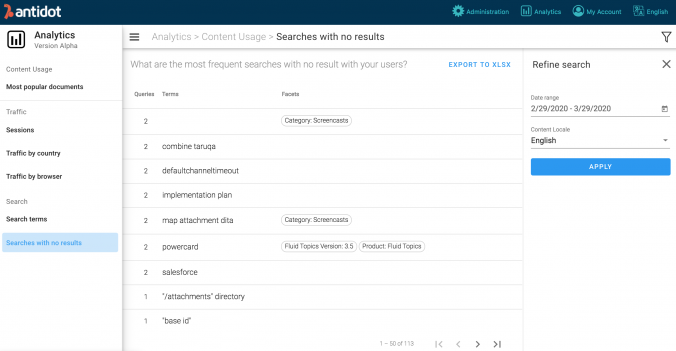
- Most popular facets to know which metadata (keys and values) are popular among end users.
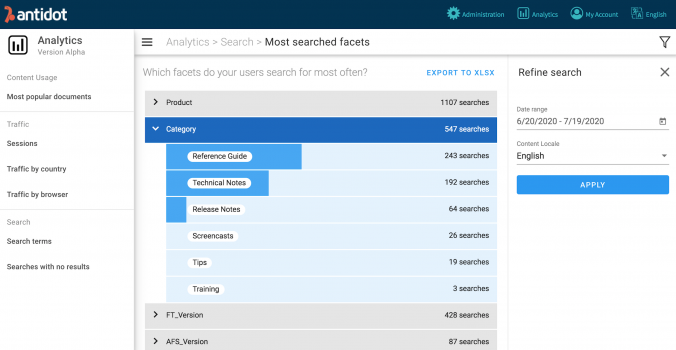
Offline mode
We’ve continued to improve the Offline mode extension:
- Swift Collections: to create a Collection that is automatically populated by a search query and that is always up to date with the results of the query.
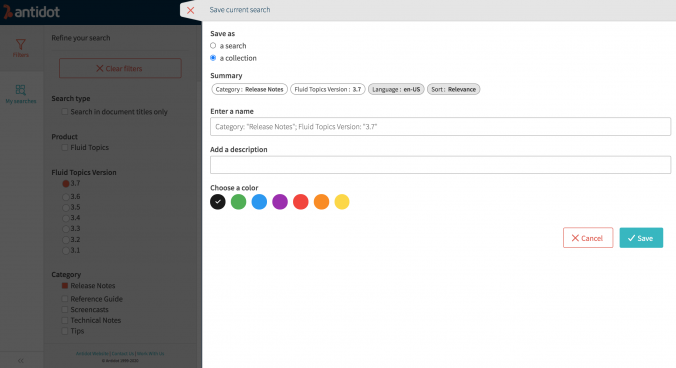
- Synchronizing bookmarks on a device facilitates users’ access to their favorite documents when switching offline.
- Badges and native notifications alert the user when documents have changed in a manual or a swift collection and they need to resync.
- Pretty URLs are accessible in Offline mode.
Pretty URL generator
We’ve included a rule engine that automatically generates ft:prettyUrl during processing, based on a document’s or topic’s metadata. It allows you to define stable and meaningful URLs for each document, down to the topic level, using any metadata and separators.
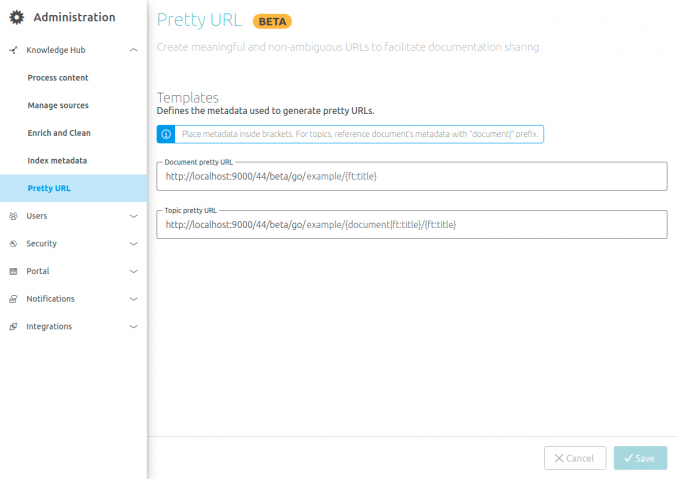
Reader pages
The Reader page has been improved with major features:
- Print topics to PDF: generate a PDF directly from the Reader page in a few clicks
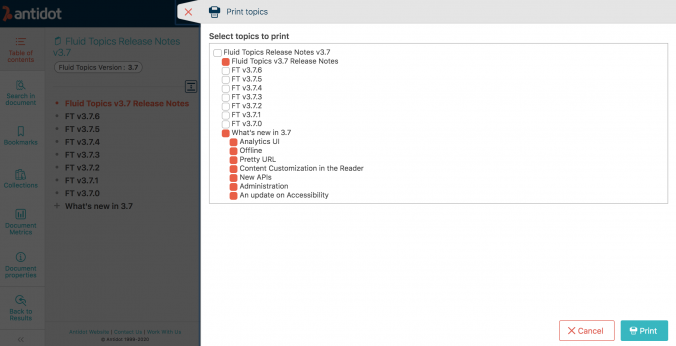
- A contextual action menu for topics to declutter the UI and make features more accessible.
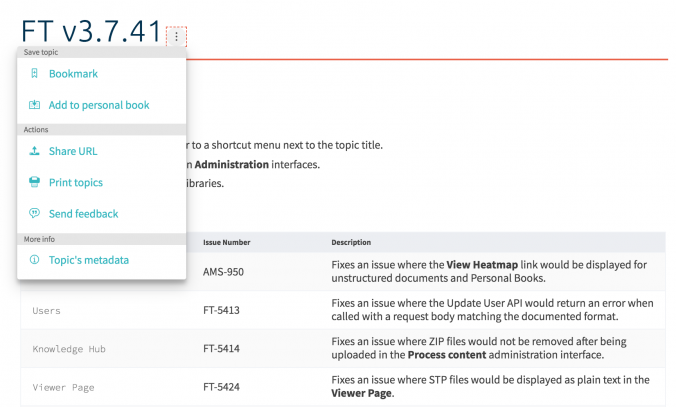
- A user-friendly, actionable cover bar at the top of the content pane that displays document information and action buttons: Print, Share a document’s URL (pretty URL when one is available) for structured and unstructured documents.
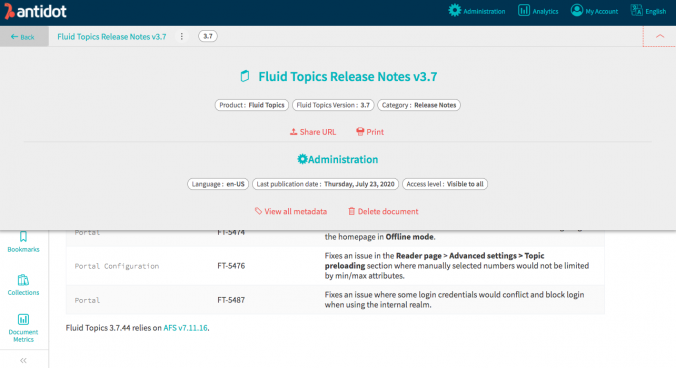
- Through simple configuration, a cover page can be automatically generated using a document’s metadata, and inserted at the beginning of the document.
Saved searches
The My searches feature (a revamping of Alerts and Scopes) has greatly simplified the logic and the UI.
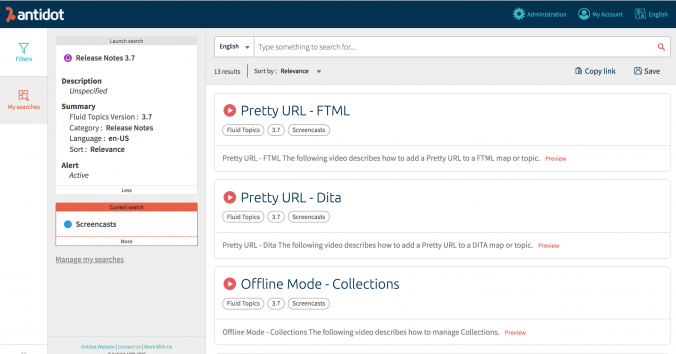
For more information, check the release note
Please give this new version a spin
and let us know what you think.
If you want to know the roadmap and participate to the choices of the next features, feel free to contact us.
We develop Fluid Topics for you.
